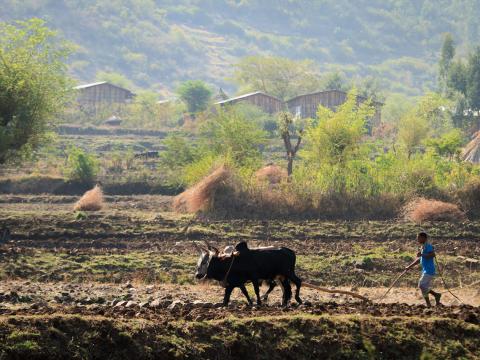Building long-term resilience in Ethiopia

According to the government of Ethiopia, 8.2 million people in the country are currently in need of humanitarian assistance due to the severe drought.
28 of the areas where World Vision works in the country will face an emergency situation due to El Niño weather conditions and the failure of the Belg rains. Combined, the climate shocks have resulted in harvest loss, livestock death and declining productivity, leaving more than 400,000 people in need of support.
However, a new report by World Vision, When there is no food assistance, shows that the global food assistance system is broken, and cannot keep pace with the massive humanitarian need around the world, which will only increase during what is predicted to be the strongest El Nino on record.
The report makes three recommendations:
- Find new money: Donors must heed early warning alerts and fully fund food assistance in countries affected by El Nino especially in East and Southern Africa.
- Protect lives and livelihoods: Prioritise combatting poor nutrition in the first 1000 days of a child’s life (from conception to age 2). The international community must support affected governments in scaling up health and feeding interventions, and protecting community assets such as livestock and water resources.
- Build long-term resilience: Greater investments are needed in early warning monitoring that activate national social safety nets to protect children, manage disaster risks and build resilience through support for sustainable, profitable, climate smart agricultural livelihoods strategies for smallholder farmers.
One example of how World Vision is working to build long-term resilience is through a process called Famer Manager Natural Regeneration (FMNR).
Read more about the social, environmental and economic benefits of FMNR
FMNR is a low-cost, sustainable, land-restoration technique that combats desertification and natural resource degradation, and is proving successful in parts of Ethiopia.
Despite the humanitarian situation across the country, those districts where FMNR has been used are showing the following characteristics:
- Compared to neighbouring districts, the agricultural production of the households has not been affected at all, due to the high moisture reserve available. As a result the nutritional status of the household is not affected
- The rivers, as well as hand dug wells, have sufficient water supply for the next 2-3 years, despite reduced rainfall
- Because honey production requires only light rain showers, the income from this source is still growing steadily
- The income from agricultural production sales more than doubled due to the failure of production in the neighbouring districts
- The environmental services: fodder supply, wood supply, stabilization of microclimate, etc are still intact and not affected
- The income obtained from carbon credits enabled the community to cover household expenses including school fees, medication, improved seed purchase, etc
While there is still much need in many parts of Ethiopia, the success of FMNR shows that, when implemented successfully, it acts as an insurance against climate induced shocks and stresses, and helps communities to build resilience.